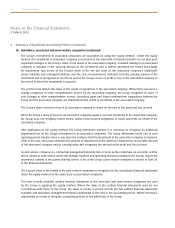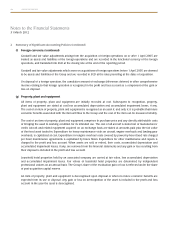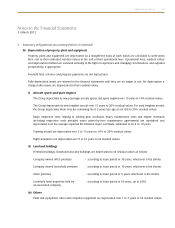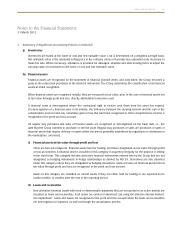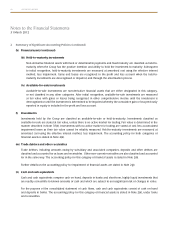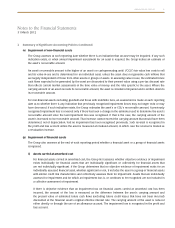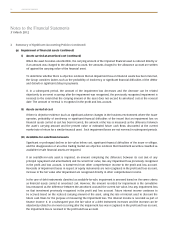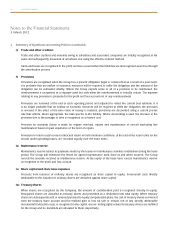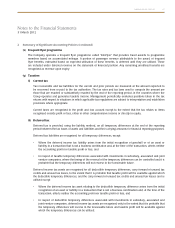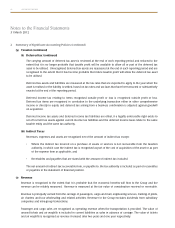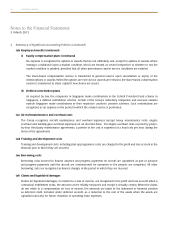Singapore Airlines 2012 Annual Report Download - page 112
Download and view the complete annual report
Please find page 112 of the 2012 Singapore Airlines annual report below. You can navigate through the pages in the report by either clicking on the pages listed below, or by using the keyword search tool below to find specific information within the annual report.
110 SINGAPORE AIRLINES
Notes to the Financial Statements
31 March 2012
2 Summary of Significant Accounting Policies (continued)
(k) Financial assets (continued)
(iii) Held-to-maturityinvestments
Non-derivative financial assets with fixed or determinable payments and fixed maturity are classified as held-to-
maturity when the Group has the positive intention and ability to hold the investment to maturity. Subsequent
to initial recognition, held-to-maturity investments are measured at amortised cost using the effective interest
method, less impairment. Gains and losses are recognised in the profit and loss account when the held-to-
maturity investments are derecognised or impaired, and through the amortisation process.
(iv) Available-for-saleinvestments
Available-for-sale investments are non-derivative financial assets that are either designated in this category,
or not classified in any other categories. After initial recognition, available-for-sale investments are measured
at fair value with gains or losses being recognised in other comprehensive income until the investment is
derecognised or until the investment is determined to be impaired whereby the cumulative gain or loss previously
reported in equity is included in the profit and loss account.
(l) Investments
Investments held by the Group are classified as available-for-sale or held-to-maturity. Investments classified as
available-for-sale are stated at fair value, unless there is no active market for trading. Fair value is determined in the
manner described in Note 37(b). Investments with no active market for trading are stated at cost less accumulated
impairment losses as their fair value cannot be reliably measured. Held-to-maturity investments are measured at
amortised cost using the effective interest method, less impairment. The accounting policy for both categories of
financial assets is stated in Note 2(k).
(m) Trade debtors and other receivables
Trade debtors, including amounts owing by subsidiary and associated companies, deposits and other debtors are
classified and accounted for as loans and receivables. Other non-current receivables are also classified and accounted
for in the same way. The accounting policy for this category of financial assets is stated in Note 2(k).
Further details on the accounting policy for impairment of financial assets are stated in Note 2(p).
(n) Cash and cash equivalents
Cash and cash equivalents comprise cash on hand, deposits in banks and short-term, highly liquid investments that
are readily convertible to known amounts of cash and which are subject to an insignificant risk of changes in value.
For the purpose of the consolidated statement of cash flows, cash and cash equivalents consist of cash on hand
and deposits in banks. The accounting policy for this category of financial assets is stated in Note 2(k), under loans
and receivables.






